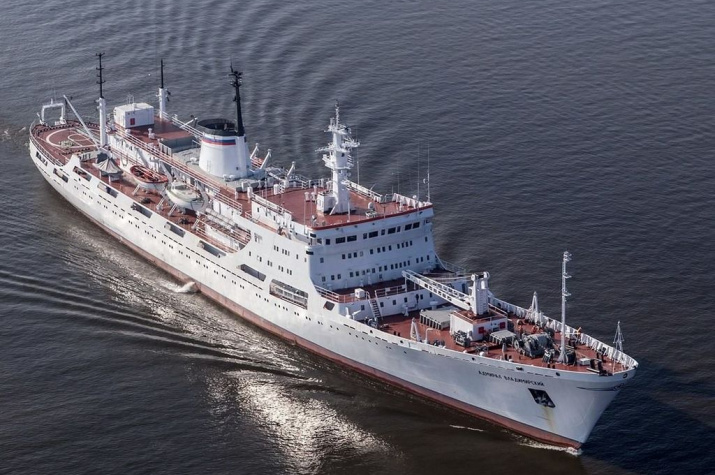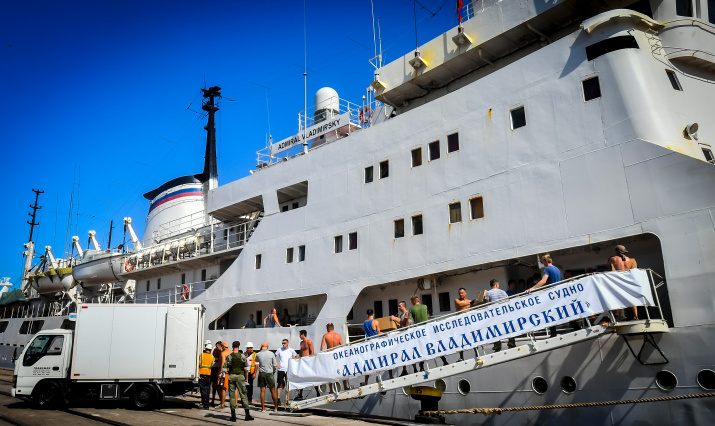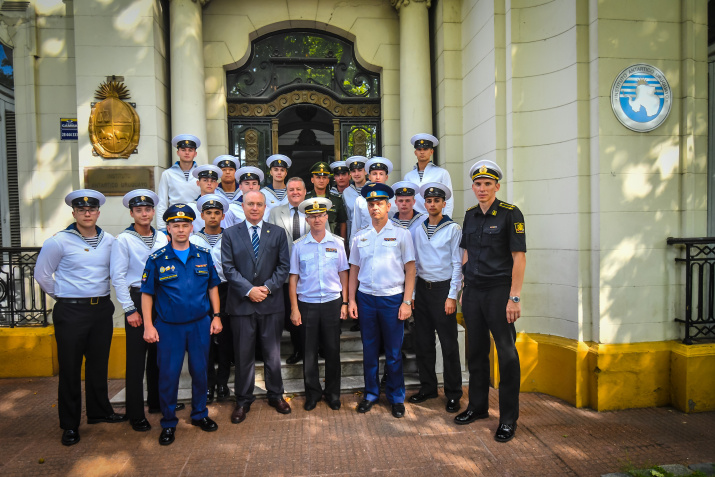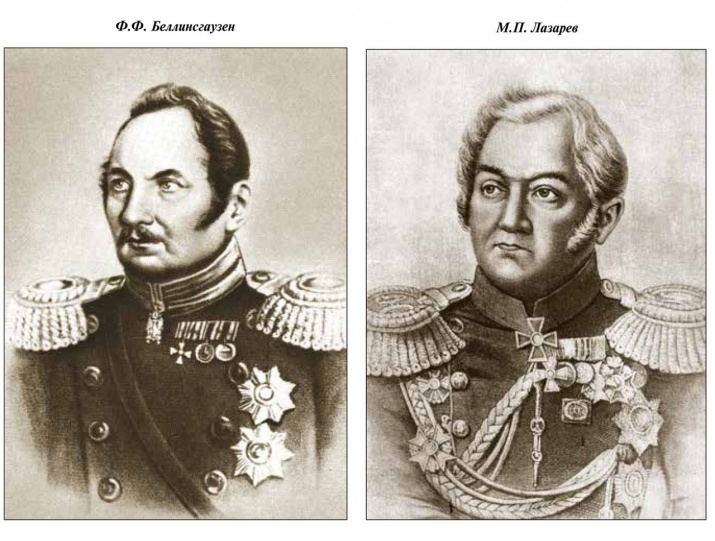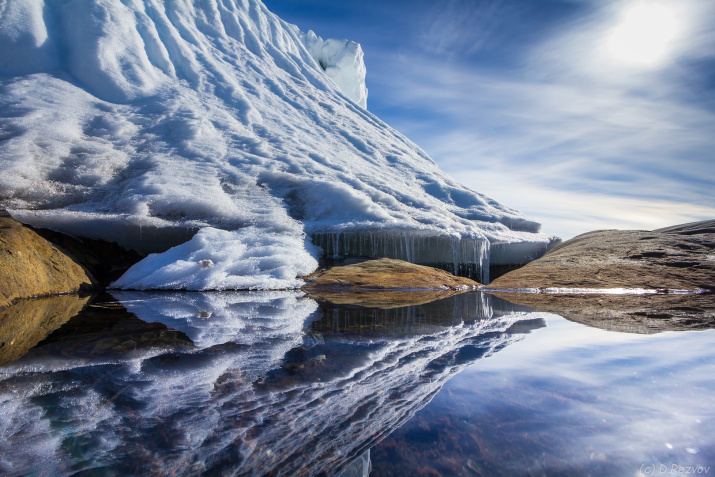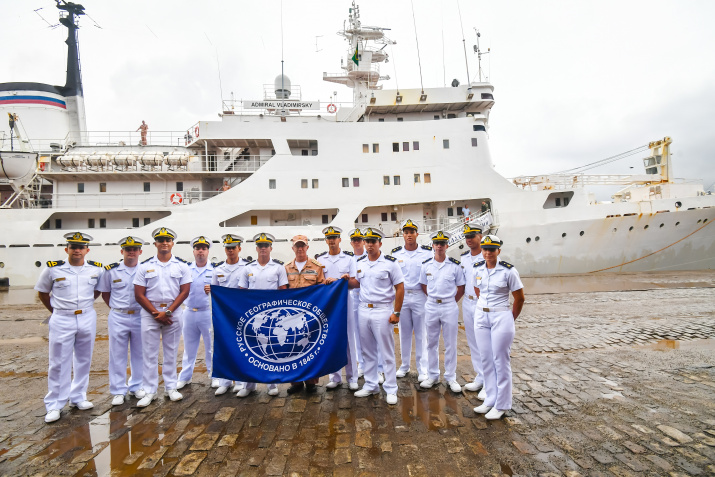On January 21st, the expeditionary ship «Admiral Vladimirsky», with the participants of the Round-the-World Oceanographic Expedition on board, headed for Antarctica, leaving the port of Montevideo. The journey is timed to the 200th anniversary of the discovery of Antarctica by Russian sailors Thaddeus Bellingshausen and Mikhail Lazarev, as well as the 250th birthday anniversary of Admiral Ivan Kruzenshtern. Our journalist learned from the head of the expedition, Oleg Osipov, how the expedition is going and what scientists want to discover during the trip.
- Oleg Dmitrievich, how much does the current expedition route matches the Bellingshausen and Lazarev`s sailing route?
- Partially. Two hundred years ago, our sailors went to Copenhagen, to Portsmouth. We did not. They went to Lisbon on the way back, and we went to Lisbon on the way there. We both went to Rio de Janeiro. But then “Vostok” and ”Mirny” went east, while we went to Bellingshausen station, to King George Island. In Montevideo, we replenish our reserves, and then go to the island of Peter I. The island of Peter I was also discovered by Lazarev and Bellingshausen. So, this section of routes matches. And then we will go, following the route, only in the opposite direction: under Australia, to the South Magnetic Pole, which is located around 140 Meridian. We hope the ice edge will allow us. Then, across the Indian Ocean, we will go to the Seychelles. We will replenish stocks, we will go to Limassol, to Cyprus, we will leave through Gibraltar and we will return. That is, we cross all meridians, thereby closing the circle.
- How did you get the idea of the current world expedition? What did the preliminary stage look like?
- A descendant of Ivan Kruzenshtern, Alexey Kruzenshtern, turned to the Minister of Defense, President of the Russian Geographical Society, Sergey Shoigu, to hold events in honor of the 250th birthday anniversary of the famous navigator. Having learned about this, I proposed to circumnavigate the world on two vessels of the Hydrographic Service. Simultaneously, another topic began to develop: 2020 is the anniversary of the discovery of Antarctica. I said: let's combine. Let's go to Antarctica, carry out work in the region of the sixth continent, so that we respect the memory of Kruzenshtern and celebrate the anniversary of the discovery of Antarctica. I drew and calculated the route. The plan was approved by the Minister of Defense.
- Returning to the Bellingshausen and Lazarev expeditions. Two foreign scientists were supposed to be aboard “Mirny” and “Vostok”, but this did not happen. Why did this happen then? And is everything in order with the scientific part of the expedition today?
- The diaries say that Russian students wanted to go with Bellingshausen and Lazarev. But the preference was given to German naturalists – general scientists. At the last moment, the Germans refused, citing the fact that they did not have time to prepare.
We have enough scientists now.
- When the expedition returned, scientific publications came out very late. Why did it happen?
- What distinguishes a Russian person from a western person? In the West, the first thing they’ll do is prioritize: "this is me, this is mine." And here, people are happy with scientific discoveries, and their publication is postponed until later. This is very well described in the book by Treshnikov about the discovery of Antarctica. Of course, sometimes you need to do something faster. Shortly after the discovery of Antarctica by Bellingshausen and Lazarev, the English sailors saw Antarctica and called it the Trinity Land. An article about this discovery was published almost immediately, in 1820, in the Edinburgh Journal of Philosophy. Bellingshausen and Lazarev made their discovery earlier, but in the time it took them to get back and get published...
-And what is the current situation with the recognition of our priority in the discovery of Antarctica?
- Vladimir Putin said that many islands in the Antarctic region had been discovered by our sailors, they had been given Russian names, and only then - English. The Waterloo island that our sailors discovered is called King George on the maps, and we add Waterloo in brackets. And the islands of Zavadovsky, marquise de Traverse - this is our minister of the sea at that time - were also renamed. And most of the Russian islands in the central Pacific Ocean have been renamed. Why do I think this happened? This is far from us, our ships did not go there, and the British, French and Americans went down to these latitudes, hunted in those places. And, of course, it was more convenient for them to call things their own way. It is not a matter of priority of discovery, but of the frequency of use of the name. It's my opinion. But the island of Peter I, the Land of Alexander I and the Bellingshausen Sea - this is not in dispute.
- Now Antarctica is a zone free of weapons, nuclear elements, mining. What, in your opinion, are the prospects, will the existing situation be revised?
- There is a consultative treaty on Antarctica. It clearly states that the continent does not belong to any state, it is for research. In Antarctica, only scientific stations can be established. This is a glacier, and there, intact layers and organisms that lived billions of years ago could be preserved. I think that we have not yet reached the stage when this ideology can be changed. Antarctica has not yet been explored so much, it presents us with so many mysteries, so many discoveries.
- Returning to our expedition. What are we exploring? What labs are on board? What results will be obtained?
- The main task is to investigate the bottom topography in the area of the Bellingshausen Sea. And, of course, make routing measurements wherever we go. We have installed multi-beam echosounders to work both at shallow depths and at great depths. We will perform gravimetric surveys. The presence of this data allows you to correctly determine the shape of the Earth. We will study the hydrological regime - salinity, temperature, speed of sound propagation in water. Naturally, we will study the physics of the atmosphere. If you look at the map of our research area, there are blind-spots where no one went at all.
If ice allows us to approach to the coast, we will try to determine the coordinates of any locations on the coastline. The coastline, which is on our map, is absolutely untrue; it does not correspond with a satellite image. The work was carried out in 1987, and there are notes on the map about "insufficient knowledge", some islands are a few miles off from where they are indicated on the map.
- Is there a chance that we will find something unexpected, not previously discovered?
- Underwater - definitely. This area is very poorly explored. I am more than sure that we will find many characteristic forms of bottom topography that are not indicated on this map. As for the surface - it all depends on how much the ice recedes. And further on we will clarify the position of the South magnetic pole. The last time this was done in 1982, almost 40 years ago, the ORS “Admiral Vladimirsky” together with the 2nd ORS “Faddey Bellingshausen”.

